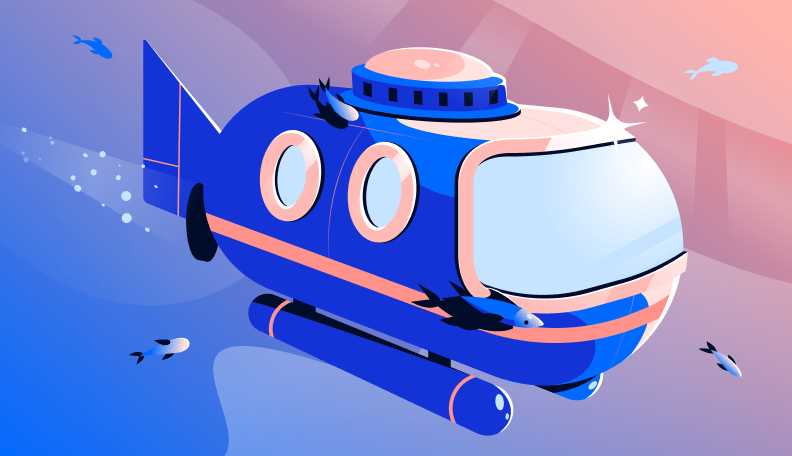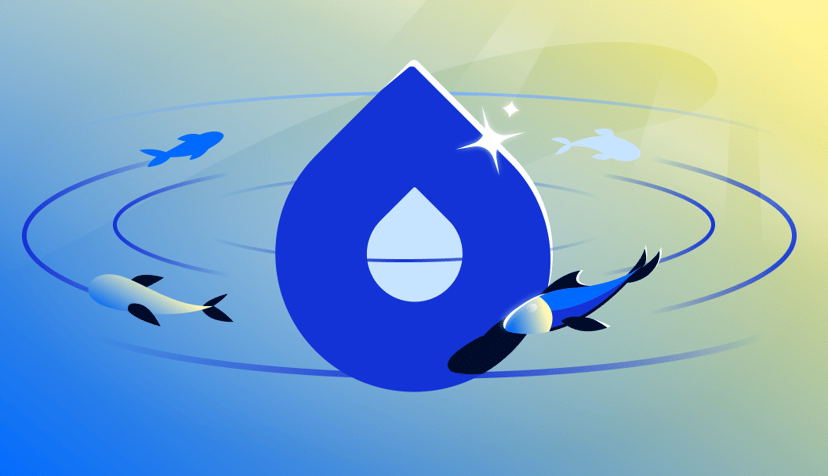The best managed Kubernetes service is the one that’s made for you
By Ryan Pollock
- Published:
- 5 min read
Since its release in 2014, Kubernetes has become the de facto standard for container orchestration. The software platform is now the foundation for a new generation of cloud native applications – those architected with ephemeral cloud infrastructure in mind.
While you can install and manage Kubernetes on infrastructure that you administer, this is a time-consuming and complicated process. Consequently, a number of companies have created managed Kubernetes services that make it much easier to provision and operate your clusters.
Many of these offerings are certified through CNCF’s Kubernetes conformance program. This program guarantees a certain level of cross-platform portability, so that you can, in theory, migrate your applications between services without tremendous trouble. Our own managed service, DigitalOcean Kubernetes (aka DOKS), has been certified conformant by CNCF.
But even with a level of standardization, certified Kubernetes services and their underlying clouds can still differ significantly in terms of features and costs.
So is DOKS the best managed Kubernetes service for you, or is another option a better fit? To answer this question, it’s helpful to recognize whether you’re the intended audience for a given product.
While others focus on the enterprise, DigitalOcean is for you and your small business
When you’re in the market for a managed Kubernetes service, it’s pretty hard to not at least consider offerings from the big three clouds. To their credit, Amazon, Microsoft, and Google have all built impressive platforms. While their strategies each differ in certain details, they all prioritize efforts in pursuit of an ambitious (and lucrative) goal: to be a comprehensive cloud platform that suits the IT needs of big businesses with equally large budgets.
In choosing to pursue the enterprise opportunity, the big three have consciously embraced complexity. Each platform features a veritable kitchen sink of products with so many settings you’re often left wondering if you’ve set up things correctly.
This is precisely why DigitalOcean continues to thrive in spite of there being better-known alternatives. At DigitalOcean, we’re focused on empowering you – the developer – and the small business or startup where you might work. DigitalOcean’s unique goal manifests in our platform’s easy-to-use design and functionality, and in low, predictable pricing.
Our approach to Kubernetes design and functionality
Simplicity is one of our company values. I sometimes joke that spinning up a cluster with DigitalOcean Kubernetes is so easy a baby can do it. While that may be an exaggeration, our user experience is much more straightforward than Google’s.
When creating your DOKS cluster, you select from one of ten global data centers, and then provision your node pools. Each node pool is powered by Droplet VMs – whatever size you believe best for your different microservices. Choose between Standard, General Purpose, CPU-Optimized, or Memory-Optimized Droplets (their differences are explained here).
Our whitepaper – Running Cloud Native Applications on DigitalOcean Kubernetes – describes a photo sharing app composed of two microservices, one for photo management and user administration. Here’s how you might set up a cluster for such an app:
Creating a DOKS cluster with two node pools
While our UI is pretty slick, you can also create and manage clusters using our API or Terraform provider, or with our doctl CLI.
Once your cluster is provisioned, you can seamlessly push container images for each service from our new Container Registry. You can also quickly install additional software, like a monitoring stack or the Linkerd service mesh, using Kubernetes 1-Click Apps from our Marketplace.
Installing Linkerd to DOKS cluster via Marketplace
As you promote your application and grow its usage, you can automatically scale your cluster, adding or removing nodes, based on the cluster’s capacity to schedule pods.
Cluster maintenance is easy. DigitalOcean will upgrade your cluster to run new versions of Kubernetes, either on demand or automatically.
Our approach to Kubernetes pricing
We price DigitalOcean services so that individuals can afford them for entrepreneurial pursuits, personal projects, or experimentation and learning. We keep our prices low, even as you scale, so that small businesses can save – and succeed – when running on DigitalOcean.
Our approach is rather different than that of some alternatives. Amazon’s Kubernetes service has long charged a fee of $73 per month ($.10/hour), and Google will soon charge the same. This fee is, ostensibly, to more than cover costs of operating the Kubernetes control plane and master, and is a drop in the bucket for AWS’ and GCP’s enterprise target audience.
In comparison, the control plane and master for DOKS is free. You only pay for your Droplet worker nodes, along with any resources associated with your cluster (e.g. storage or load balancers). This means you can run a cluster on DOKS for as little as $10 a month should you elect to run a solitary worker node sized as a Standard Droplet with 1vCPU and 2GB RAM. Such a $10 cluster provides the perfect playground – a real, persistent cloud environment that you can use as you learn and develop with Kubernetes.
DOKS’ price advantage continues as you scale. DevOps Directive recently published their own analysis of costs for various managed Kubernetes services. In their example of a cluster composed of General Purpose VMs with dedicated CPU, they found that DOKS came in significantly cheaper than AKS, EKS, and GKE.

Graph courtesy of DevOps Directive
What to do if DOKS is right for you
If this piece resonates, I hope that you take DigitalOcean Kubernetes for a spin. You’ll find it quite easy to spin up your cluster and connect to it in just a few minutes. To help you learn Kubernetes and related technologies, I recommend you check out our free Kubernetes for Full-Stack Developers Curriculum.
Business users who are intrigued by the thought of using DigitalOcean Kubernetes should know that they would be in good company. Some pretty big small businesses run on DigitalOcean Kubernetes, utilizing clusters with hundreds of nodes. Such businesses often save tens or hundreds of thousands of dollars each month, much of it on bandwidth. We’ll be sharing stories of such customers in the weeks ahead. In the meantime, we invite you to contact us to learn more about how you, too, can enjoy similar success and savings.
Ryan Pollock, DOKS Product Marketing
About the author
Try DigitalOcean for free
Click below to sign up and get $200 of credit to try our products over 60 days!Related Articles

Evaluate your AI agents faster and more effectively
- December 4, 2025
- 3 min read

Streamline Your Workflow: Announcing Environment Support for DigitalOcean App Platform
- November 25, 2025
- 5 min read

GPU Observability: Get Deeper Insights into Your Droplets and DOKS Clusters
- November 12, 2025
- 2 min read